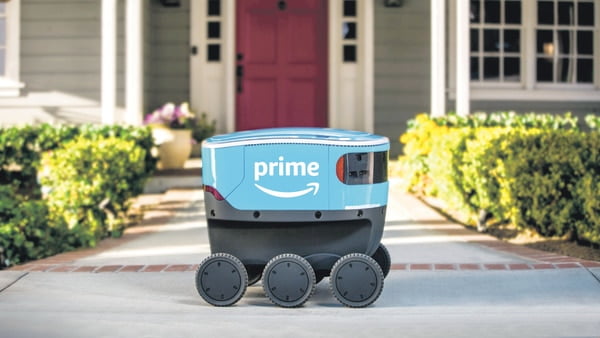
One of the central figures in American writer Isaac Asimov’s I, Robot (1950) was a robot called Robbie—a metallic nursemaid with a positronic brain, which imparted to it a consciousness and ability to interact with humans. One of the first robots science writer and journalist David Ewing Duncan introduces the readers to in his newest release, Talking To Robots, is similar to Robbie. The Teddy Bots, Duncan explains, are stuffed animal-robot hybrids that can answer questions from children using advanced neural network processors as well as play games with them. These bots can even project movies on walls through “belly-button holo-projectors”. Talking To Robots is narrated through an alternative timeline that Duncan calls the “near-future present”. Developments in this “future” draw from real-life advancements in AI (Artificial Intelligence) to project an extrapolated reality. “This allows the reader to experience things that may occur in the future as if they are happening right now; or from the perspective of a person living in the future for whom the events of the present day happened long ago, and with the knowledge of how things actually turned out,” Duncan writes.

From Teddy Bots to robots that eventually replace humans across professions, such as coffee-delivery bots and a brain-optimization bot, Talking To Robots is a guide that contemplates every possible human-robot scenario. There’s also the ERE, or the early robot era, that Duncan returns to in the book at intervals, combining reporting on real-life robots and AI systems with plausible scenarios.
This is a future where wearable bots or “wear-bots” talk to humans by sensing energy waves that emanate from people, plants or animals. These wear-bots use embedded sensors and microcomputers to convert the energy waves into patterns of “pokes and prods, delivered by micro-vibrators that gently touch our skin”. Our brains have learnt to interpret these taps and patterns in much the same way that visually impaired people learn to read Braille.
However, the future has not been so kind to some of the Big Tech CEOs. Duncan explains that automation doesn’t spare anyone and that humanity ultimately reaches full unemployment, with every job on Earth, Mars and lunar colonies snatched away by robots. Big names such as Mark Zuckerberg, Jeff Bezos and Tim Cook are shown being escorted out of their respective company headquarters by security bots “just a few years after 2035, each of them toting filing boxes containing his personal effects”.
Duncan also simplifies the confusion between “robots” and “bots” by saying that the words are the “broadest sort of descriptors for smart machines and machine systems of all kinds, real and imagined, anthropomorphic and not”. This includes everything from your smart toaster and social media algorithms to drones, apps and computer systems.
Every chapter is supported with interviews with technology and robotics experts—futurists, thinkers and physicists—like Kevin Kelly, author and founding executive editor of technology magazine Wired, for the chapter on Teddy Bots. Kelly is one of the many “actual humans” Duncan interviewed for the book, a tongue-in-cheek list towards the beginning of the book says. There are some cases where Duncan also quotes relevant subject matter experts: for instance, an oncologist in the chapter on “doc robots” and “robot physicians”. These interviews not only keep the real and imagined worlds separate, but support future scenarios with valid forecasts, thoughts and ideas from the experts.
It is certain that mankind will arrive at a juncture in the future where the influence of robots and AI systems will be part of everything we do and experience: hailing a cab, prepping for war, choosing the right beer or preserving our memories. There is even a chapter on an intimacy bot in the book to keep your relationships exciting.
Which brings us to the journalism bot: As Duncan explains, there’s no “actual journalist bot in this future”. There are certain software and bots that “assist” humans in the newsroom, but no super-bot that “takes care of the news for us”. Part of the reason behind this move, Duncan writes, was also the fact that humans don’t trust journalism bots to be as “creative” as a human when it comes to writing certain stories.
You can rest assured that this review was written by a human.
[“source=livemint”]





